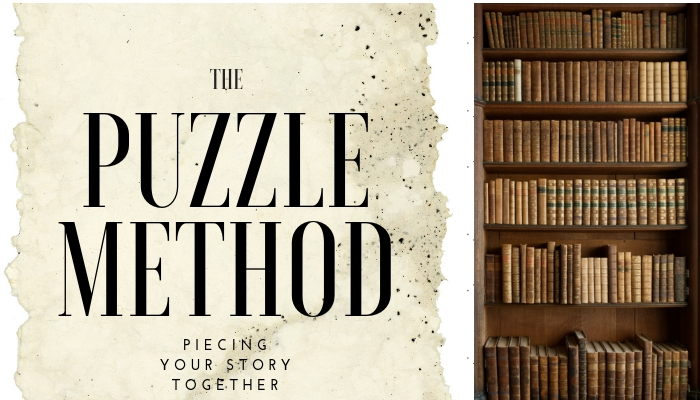The Puzzle Method
Got writer’s block? Maybe you need to shake up your novel writing routine. Have you considered the Puzzle Method—AKA writing out of order?
It’s an uncommon approach, but bear with me. For example, you may be stuck in your writing because you aren’t inspired to write the part you’re currently faced with in the story. Many writers who start but can’t finish chalk it up to a lack of inspiration. It’s easy to write when you first come up with an idea and you’re excited about it, but as you get into the nitty gritty of the novel—the plot, the character development, the world building, the continuity—eventually that excitement fades. It’s at this point writer’s block rears its ugly head.
Step One: Identify Where You’re Stuck
One of the worst things about writer’s block is that the best sections of your grand idea—the parts you are most excited to write—aren’t at the beginning. They’re often at the end, or somewhere in the middle. In starting your plot bunny at chapter one and attempting to make your way to that exciting scene you desperately want to write, you lose your momentum. You become frustrated. You just want to get to that great scene you love, but there is a chasm of uncharted plot between you and that part of the story. To quote novelist Fannie Hurst, “writing is the loneliest job in the world. There’s always that frustrating chasm to bridge between the concept and the writing of it. We’re a harassed tribe, we writers.”
Every writer has been faced with that frustrating chasm, but once you identify where you’re stuck, do you know what I say?
Step Two: Skip It!
Skip it completely. You can always come back to the section you’re stuck on—that’s the beauty of being the creator. Go ahead and write that scene you want to write. You’ll have time to rewrite it later, but you won’t always have that new idea inspiration. Milk every bit of that first spark! Why can’t you treat your novel like a puzzle? If you jot down the scenes of the story that are already solid and fully fleshed out in your mind, who is to say the rest won’t fall into place? At the very least, I bet you’ll come up with new twists, turns, and potential plot devices you wouldn’t have come up with otherwise. You might even accidentally build a bridge over that frustrating chasm. Or two bridges. Or three. Now you have options. “It is absolutely okay if the story comes out reversed or jumbled or upside down because it’s out,” says Tor author Susan Dennard. “[The] words on the page can always be fixed later.” For more on the subject, check out best-selling author Anne Lammot’s thoughts on perfectionism: https://www.brainpickings.org/2013/11/22/bird-by-bird-anne-lamott/
Step Three: Play With Foreshadowing
Once you reach this point, you’ll discover there are other advantages to writing out of order. The two biggest ones are a) not having to rewrite as much and b) having a much easier time with foreshadowing. These go hand in hand. By writing out of order, and in particular writing more of the end and middle before your beginning, you’ll avoid finishing your novel only to have to reconstruct the entire thing. Too many times I’ve heard writers say, “I finished my novel. I know what I need to do to fix it, but I’m basically going to rewrite it.” By writing out of order, you can prevent this situation from happening. You can practically go through the first, second, and third draft before even finishing the novel—and without the added time. When you do finish, you’ll have a first draft that reads like a third, and with foreshadowing no less. After all, if you already wrote most of the ending and most of the middle, it’s a lot easier to go and write the beginning with a heavy dose of symbolism and foreshadow to make a reader go “Oh!” when they reach the end (or when they decide to reread!) For further reading, check out Writer’s Digest editor Cris Freese’s thoughts on foreshadowing: http://www.writersdigest.com/editor-blogs/there-are-no-rules/craft-technique/5-things-the-path-can-teach-us-about-writing
What do you think, writer? Think you’ll give the Puzzle Method a try?



